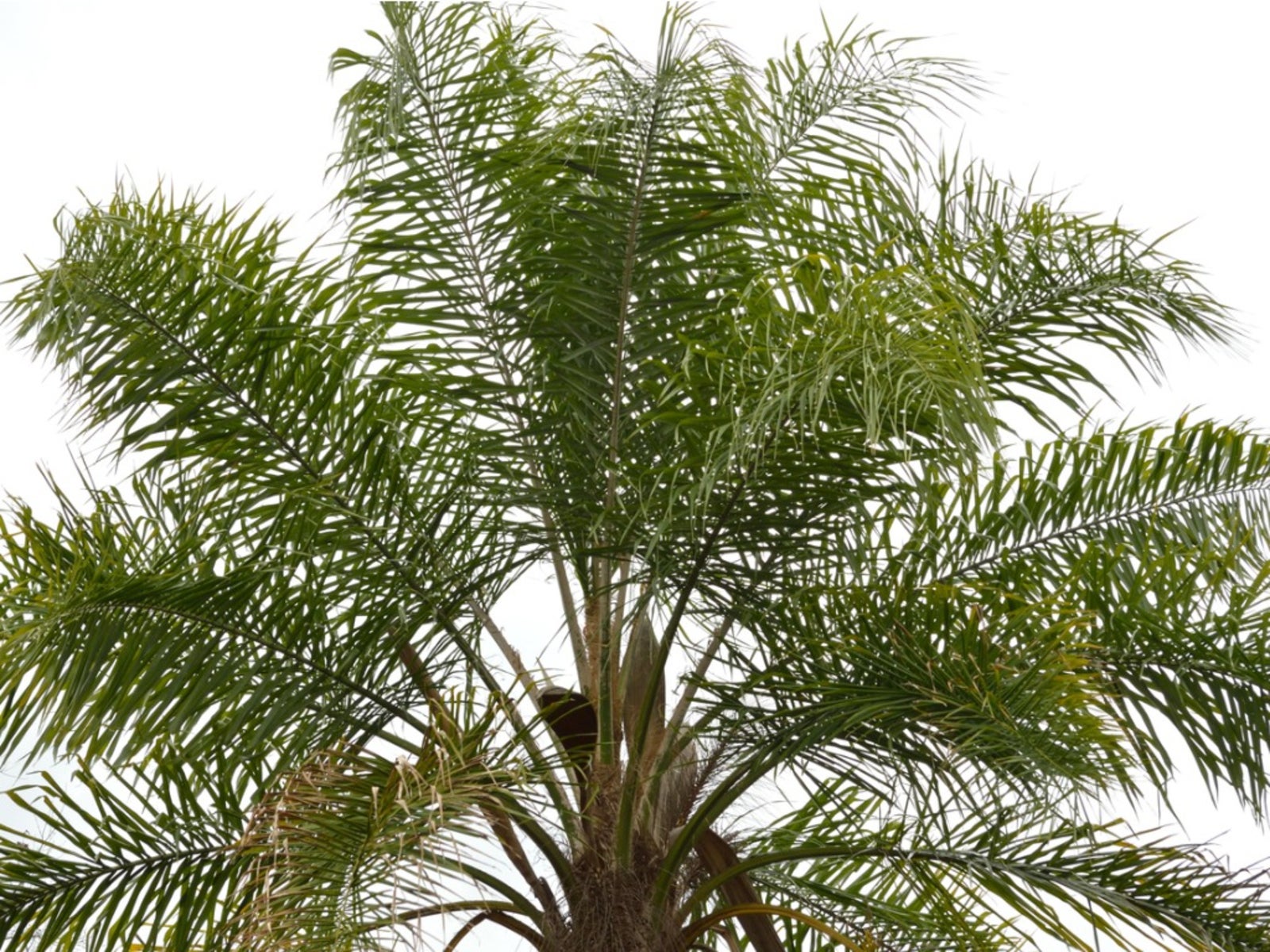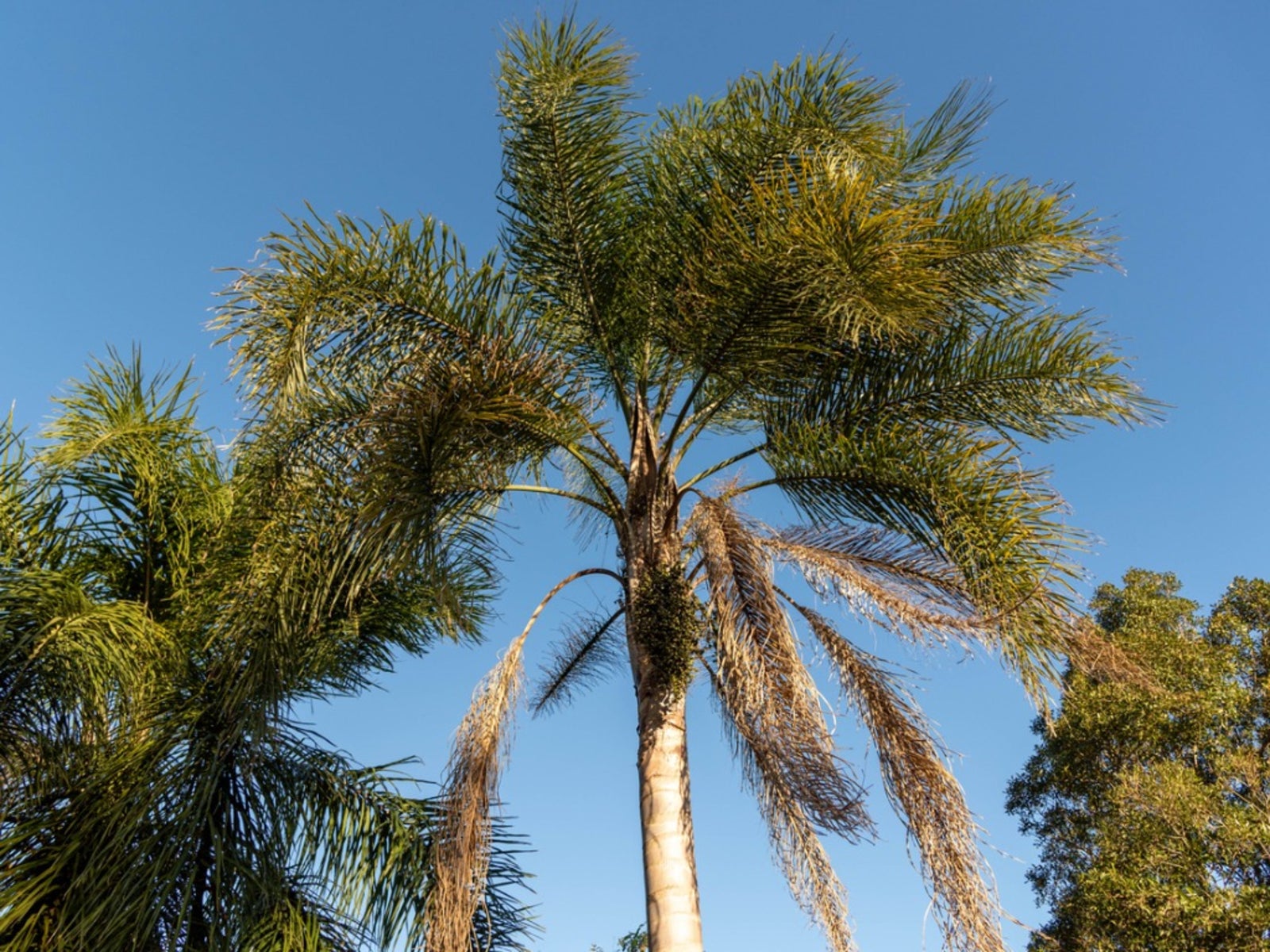Queen Palm Care – Learn How To Grow A Queen Palm


Queen palm trees are stately, single-trunked palms topped with glossy, bright pinnate leaves that droop softly in a graceful canopy. Bright orange dates hang in ornamental clusters. Queen palm trees are popular landscape trees in warm regions. For more queen palm tree information, read on.
Queen Palm Tree Information
Queen palms (Syagrus romanzoffiana) are tall, beautiful trees, but not everyone can grow them. These palms thrive only in U.S Department of Agriculture plant hardiness zones 9b through 11. Queen palm trees grow to 50 feet (15 m.) tall, and their canopies can spread to 25 feet (8 m.). Like many tall palms, the trunk is straight and branchless, but crowned with a canopy of palm leaves. As if the majesty of these palms was not enough to win hearts, queen palm trees also produce large plumes of miniature blossoms in summer. These flowers mature into bright orange fruits by winter.
How to Grow a Queen Palm
Gardeners who live in a warm region may be interested in growing a queen palm. If you want to know how to grow a queen palm, it is easier than you might think. If you are going to grow queen palms from seed, be sure that the seeds are at least half ripe before you use them. Remove the fruit pulp then soak the seeds in water for a few days. Once the soaking period is done, plant the seeds in a well-drained, moist potting soil. Germination can take from six weeks to six months. Keep the seeds in high temperatures during germination. Transplant the seedling into a sunny location. Be sure the soil is acidic and well-draining since this combination minimizes the required queen palm care.
Caring for Queen Palms
Once your queen palm is established, the tree develops rapidly. At this point, you’ll have to undertake essential queen palm care. Queen palms like ample moisture in the soil, so don’t let it fend for itself during dry periods. You should also apply fertilizer regularly. Part of their care also includes keeping all turf a distance from the trunk to prevent decay. Caring for queen palms is much easier if you have planted the tree in an appropriate location with acidic soil. The tree will develop severe mineral deficiencies in alkaline soil, stunting young leaves and potentially killing the tree. You can save a tree planted in alkaline soil, however, if you offer regular applications of manganese and/or iron to keep the tree alive.
Gardening tips, videos, info and more delivered right to your inbox!
Sign up for the Gardening Know How newsletter today and receive a free copy of our e-book "How to Grow Delicious Tomatoes".

Teo Spengler is a master gardener and a docent at the San Francisco Botanical Garden, where she hosts public tours. She has studied horticulture and written about nature, trees, plants, and gardening for more than two decades. Her extended family includes some 30 houseplants and hundreds of outdoor plants, including 250 trees, which are her main passion. Spengler currently splits her life between San Francisco and the French Basque Country, though she was raised in Alaska, giving her experience of gardening in a range of climates.
-
 Looking For Plants To Give You The Soft And Fuzzies? Try These 5 Fuzzy Leaf Plant Options
Looking For Plants To Give You The Soft And Fuzzies? Try These 5 Fuzzy Leaf Plant OptionsLovers of texture, drama, silver foliage and tactile plants will adore these special sensory garden additions. These fuzzy leaf plant options will leave you all aglow
By Susan Albert
-
 Get Ready For A Summer Of Hummers! Grow These Full Sun Hummingbird Plants and Flowers
Get Ready For A Summer Of Hummers! Grow These Full Sun Hummingbird Plants and FlowersIf you’re lucky enough to enjoy a sunny backyard, make sure you are maxing out on your pollinator opportunities and grow these full sun hummingbird plants and flowers
By Tonya Barnett
-
 Can You Grow Queen Palms In Pots: Tips For Potted Queen Palm Care
Can You Grow Queen Palms In Pots: Tips For Potted Queen Palm CareAlthough queen palm is suitable for growing outdoors in USDA zones 9 through 11, gardeners in cooler climates can grow queen palms indoors, providing an elegant, tropical feel. Click this article to learn more about growing queen palm houseplants.
By Mary H. Dyer
-
 Winterizing Queen Palm Trees: Care Of Queen Palm In Winter
Winterizing Queen Palm Trees: Care Of Queen Palm In WinterQueen palm cold damage can be fatal in extreme winters. For this reason, knowing how to overwinter queen palms is a must to protect your investment. This article will help with that. Click here for more information.
By Bonnie L. Grant